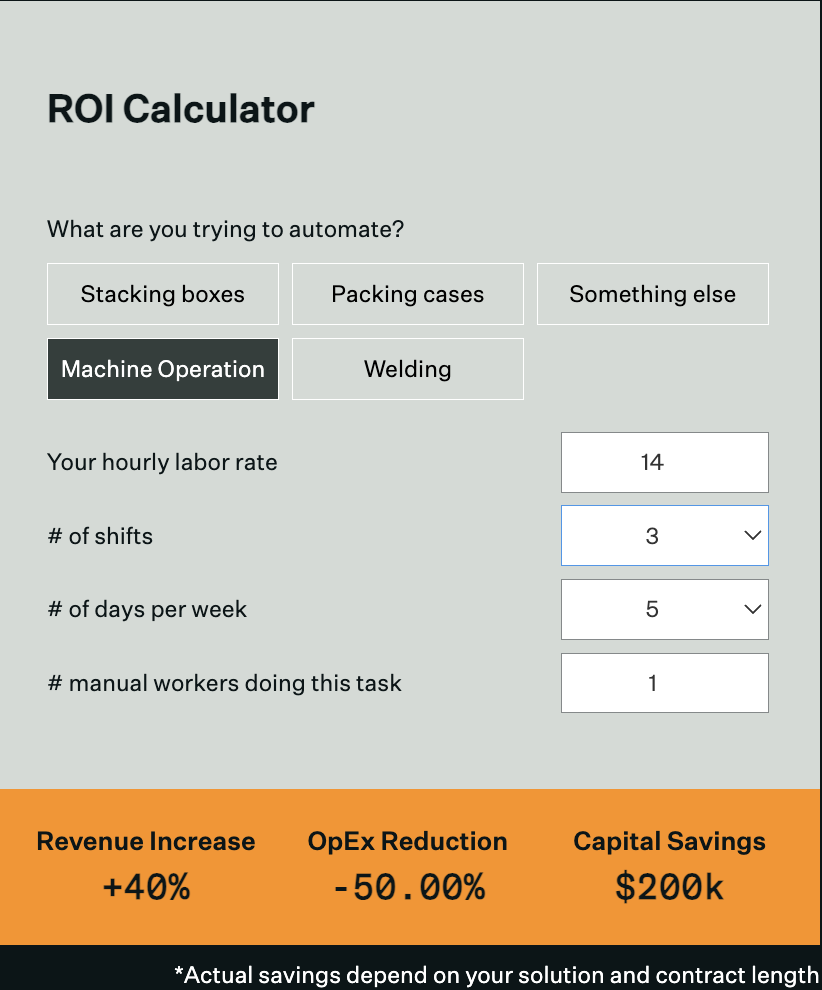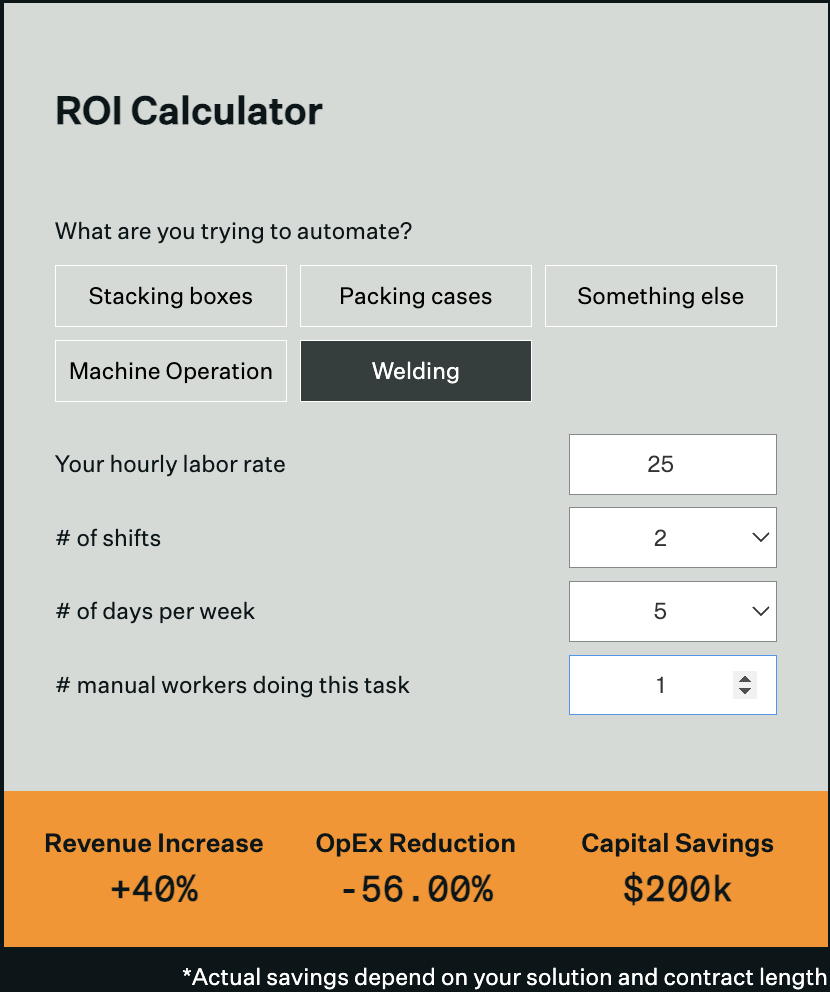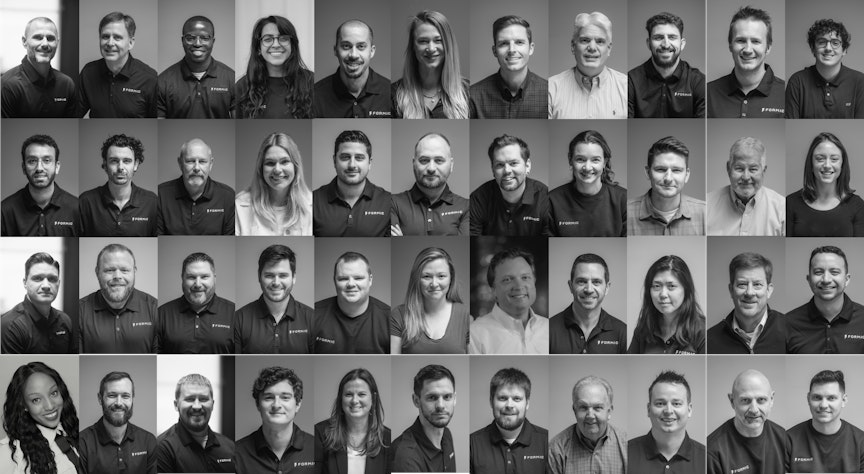The Advantages of RaaS Automation in Manufacturing
Automation plays a crucial role in improving productivity and efficiency in various industries, but is mission critical to the scale and growth of manufacturing and production processes. Industrial Automation has made significant advancements in the field of manufacturing robotics that have provided the industry with the capability to manage the demand, despite the challenges of the labor shortage. Many industrial businesses continue to adopt and leverage the advantages of using robots in different manufacturing processes, such as automated welding, automated CNC machine tending, and automated injection molding to drive success. The introduction of Robotics-as-a-Service (RaaS) into the market unlocks new production potential and massive long term benefits for SMB and Mid-Market businesses that had once been reserved for large companies due to large upfront investments and internal system capabilities.
Automated Welding for Enhanced Productivity
Automated welding systems have revolutionized the welding industry by increasing productivity and ensuring consistent weld quality. By utilizing robotic welders, manufacturers can achieve higher production rates and reduce welding defects. These robotic welding systems can handle complex welding tasks with precision, efficiency, and repeatability across a wide array of projects - frequently handling multiple different setups a day easily. With automated welding, manufacturers can improve their overall operational efficiency and meet the ever-increasing demands of the market.

Streamlining Machine Tending with Automation
Machine tending, which involves loading and unloading parts into machines, is another area where automation has proven to be highly beneficial. Automated machine tending systems can handle repetitive tasks with speed and accuracy, reducing the risk of human error. These systems can operate 24/7, resulting in increased production rates and reduced downtime. By leveraging robotic machine tending, manufacturers can optimize their manufacturing processes, run more shifts, and achieve higher levels of efficiency with the staff that they currently have ont he team. It is harder than ever to recruit and hire people to work machines, resulting in many machines in a facility sitting idle despite being capable of handling the work being run on the floor. Robotic machine tending expands the capability of your current team to run many cells at once, improving your throughput and lead times.

Enhancing Injection Molding with Robotic Automation
Injection molding is a widely used manufacturing process in which molten material is injected into a mold to create various products, typically at high volume due to the required investment in the mold. Robotic automation has greatly enhanced the efficiency and precision of injection molding operations. Automated injection molding robots can perform tasks such as part removal, sorting, and packaging with speed and accuracy no matter the temperature of the parts or the working environment. These robots can handle complex molding operations, leading to improved product quality and reduced cycle times.
Robotics-as-a-Service (RaaS) for Flexible Manufacturing
In the metalworking industry, Robotics as a Service (RaaS) offers a cost-effective solution for companies seeking the benefits of automation without the significant initial investments and ongoing maintenance and update costs associated with owning industrial robots. By using the Robots as a Service mode, companies can more easily adapt to changes in production demands or shifts in the market, without the need for even further substantial additional investments. With RaaS, you never have a piece of automation equipment end up under a tarp collecting dust because it no longer fits with your production needs. RaaS allows you to shift and adjust with your production needs as they arise.
The adoption of RaaS in metalworking also results in increased efficiency and productivity. Automating repetitive tasks, such as cutting, welding, and assembling, frees up human workers to focus on more complex and value-added activities, or simply oversee more work being done by machines without the need for more people. This automation, facilitated by robotic systems, ensures a higher level of precision in metal fabrication processes, resulting in products of consistent quality. Moreover, the integration of robotics in metalworking reduces the likelihood of human error, further enhancing the overall quality of the output and eliminating costly lead time impact and expensive scrap for parts that don’t pass QC. Ultimately, the benefits of RaaS in the metalworking industry are clear, offering a cost-effective, flexible, and efficient solution for companies looking to leverage the advantages of industrial robots.
Ownership of Manufacturing Robotics
Owning industrial robots in the metal fabrication industry involves significant financial outlay, as well as internal operational expertise, and ongoing maintenance expenses. The high initial costs for purchase, installation, and hiring of engineers can be difficult for some businesses to absorb. The cost of acquiring industrial robots is substantial, with prices varying based on the robot’s complexity and capabilities. Installation is another expense that requires specialized knowledge and often external consulting, adding to the financial burden. Like any machinery, industrial robots need regular maintenance to ensure optimal performance. This includes routine inspections, software updates, cleaning, and occasional repairs, all of which contribute to the total cost of ownership.
Industrial robot ownership also begets limited flexibility once the equipment is purchased and installed. Adapting to new technologies can be challenging and expensive, given the rapid advancements in robotics. Moreover, these robots are typically designed for specific tasks. Hence, scaling operations or adapting to new product lines may require additional investment in different robots or reprogramming and recalibration of existing ones, which can be both costly and time-consuming.
Therefore, while industrial robots can greatly improve productivity and efficiency in the metal fabrication industry, potential drawbacks like high initial costs and limited flexibility must be carefully weighed by companies considering their purchase.
The Future of Custom Manufacturing and Metal Fabrication with Robotics
As technology continues to advance, the role of robotics in manufacturing will only become more prominent. Robotic systems, such as automated welders, machine tending robots, and injection molding robots, offer significant advantages in terms of productivity, efficiency, and quality. With the emergence of Robotics-as-a-Service (RaaS), manufacturers can leverage the benefits of robotic automation without the present and future financial burdens of ownership. By embracing automation and robotics, manufacturers can stay competitive in the global market and drive innovation in their respective industries.
Download the Free Guide: How to Get Started with Robotic Automation
Automating with Formic, the only question manufacturers need to ask themselves is: what repetitive manual tasks can be automated in my facility right now?


